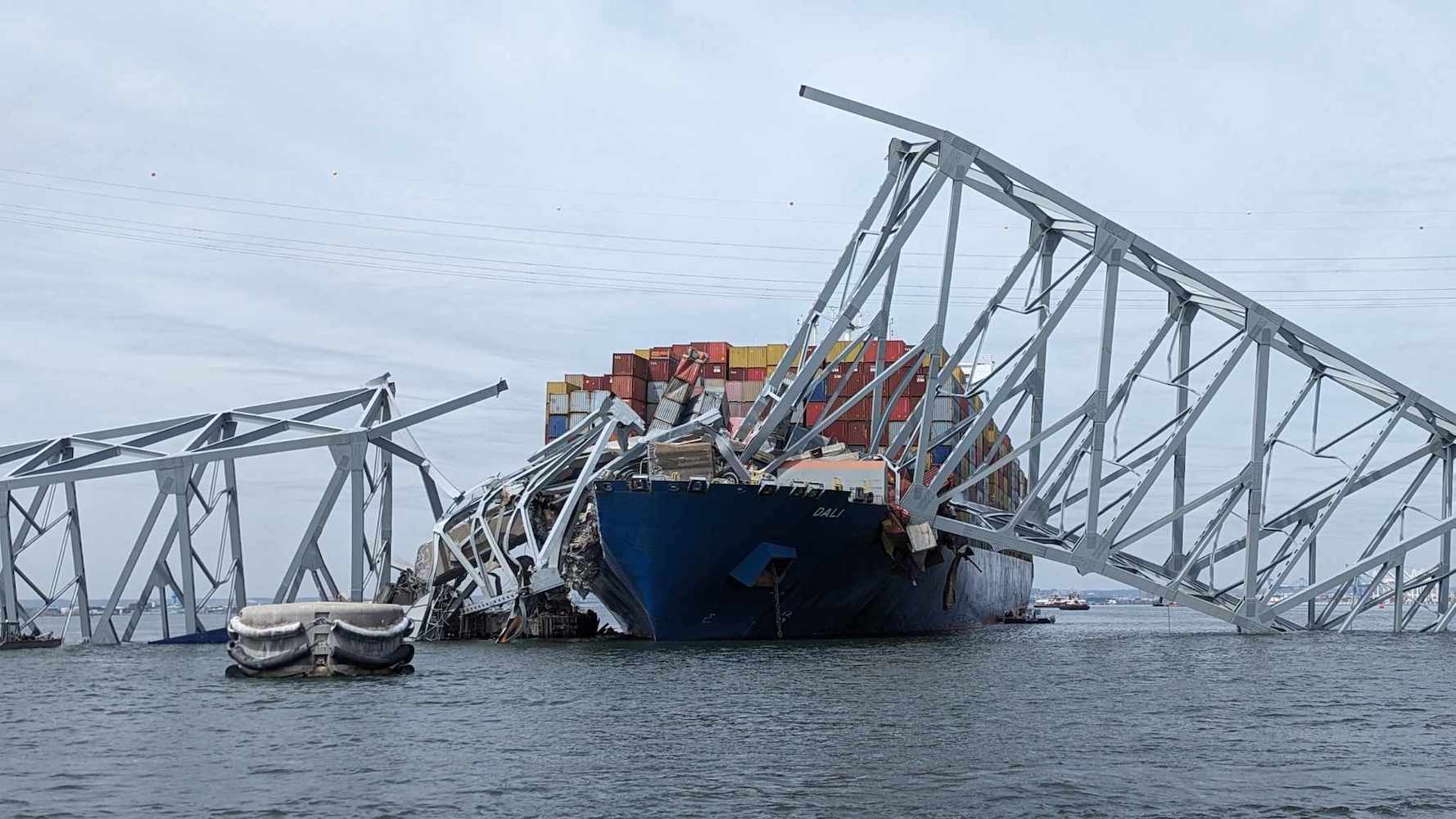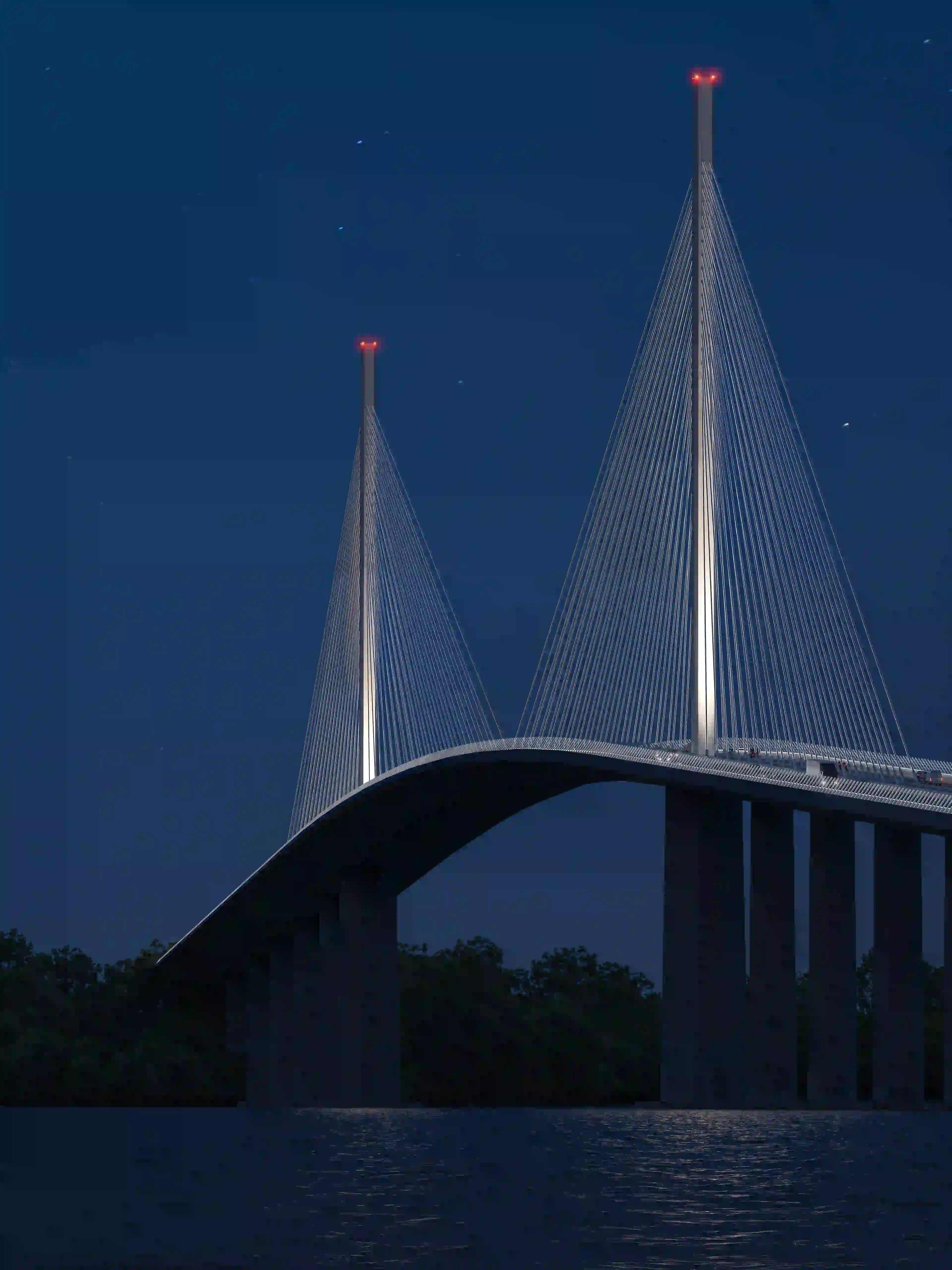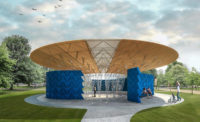In the small hours of March 26, Baltimore’s Francis Scott Key Bridge suffered a complete collapse when a Sri Lanka–bound cargo ship crashed into one of its support piers, killing six people. Now, almost two months later, many questions about the collision remain unanswered, and the ship, called Dali, remains anchored in Baltimore Harbor—its crew still onboard—trapped under the 1.6-mile-long bridge’s significant wreckage. On Monday, crews conducted a controlled demolition to break down the largest remaining span of the collapsed bridge.

The Francis Scott Key Bridge In Baltimore following its catastrophic May 26 collapse. Photo by Scott Adams/U.S. Army Corps of Engineers, Wikimedia Commons
As the city works to free the boat and restore the port’s traffic, Carlo Ratti Associati (CRA) has released a new design proposal to replace the collapsed structure, which opened in 1977 as the final link in Interstate 695. Developed in collaboration with structural engineer Michel Virlogeux and international construction group Webuild, CRA’s proposal incorporates design features that guard against future collisions as well as improve upon the major thoroughfare’s sustainability and longevity.

Rendering courtesy Webuild, Carlo Ratti Associati, and Michel Virlogeux
A continuous truss structure, the Francis Scott Key Bridge’s main span measured 1,200 feet, the third-longest in the world. CRA’s redesign follows a cable-stayed approach, where the deck is supported by cables connected to vertical columns, and enlarges the central span to 2,230 feet. This would situate its main support pillars in the shallower edges of the Baltimore Harbor, and out of the main navigation channel used by large vessels like Dali. According to the design team’s statement, this approach is also one of the materially efficient ways to build at the proposed span, reducing the project’s embodied carbon. It also minimizes the disruption of the harbor’s ecosystem by eliminating the need for the artificial islands that protected the previous bridge’s support columns.
Virlogeux designed several high-profile cable-stayed bridges, including Ponto Vasco da Gama in Lisbon, and the Millau Viaduct in the Occitania region of France. Webuild oversaw the speedy reconstruction of the Morandi bridge in Genoa, Italy, which collapsed in August of 2018.
The proposal would also increase the bridge’s clearance from 185 feet to 230 feet, to align with the shipping industry’s latest standards, and add a lane in each direction to ease congestion on the well-trafficked overpass, which previously carried 11.5 million vehicles annually. Additional features include an array of photovoltaic panels, and the integration of smart technologies drawn from Carlo Ratti’s work at the MIT Senseable City Lab, which monitors the structural safety of bridges using cellphone data.
A widely circulated video of the March 26 disaster drew significant press attention, and raised questions about whether human, mechanical, or structural error caused the bridge to collapse. A preliminary report, released earlier this week, indicated that the 984-foot-long ship experienced four power failures in the hours before the collision. The Dali captain was able to send out a mayday signal seconds before the fatal crash, a move which prevented further loss of life as workers on the bridge were able to halt the trickle of late-night traffic.
Hours following the collapse, President Joe Biden said in a statement that the federal government would completely fund the bridge’s reconstruction. Earlier this month, officials from the Maryland Department of Transportation said they planned to replace the bridge by late 2028, projecting a total construction cost of $1.7 to $1.9 billion, though no formal design proposals have been released. “We are ready to help in any way we can at this stage in the spirit of pro bono service,” said Webuild CEO Pietro Salini in a letter sent to the US Secretary of State for Transportation, the Governor of Maryland, and the Director of the Maryland Port Administration. “The design concept of the bridge that we have been working on incessantly during this last month will represent a key contribution towards the new construction or reconstruction.”






Post a comment to this article
Report Abusive Comment